DIY Lavender Citrus Soap (Easy Rebatch Soap Recipe)

Learn how to make citrus soap for summer skin care. This easy lavender citrus soap recipe is made using the rebatch soap making method. Also referred to as hand-milled soap, this simple soap project is formulated by grating existing soap bars or leftover soap slivers. That soap is then rebatched with water, moisturizing vitamin E and essential oils for a nourishing summertime soap.
Lavender Citrus Soap DIY
Making homemade soap doesn’t have to be a challenge. If you’ve never made soap before, then you’ll appreciate this easy citrus soap recipe. It’s not only a dream to make, but it’s also an affordable way to get started dabbling in soap making.
This DIY citrus soap isn’t made using a melt and pour soap base. Nor is it crafted using a cold process soap recipe. Instead, this homemade soap is made using the rebatch method. Often referred to as hand-milled soap, rebatched soap is made by grating an existing soap bar then adding additional ingredients to create an entirely new soap! As you are able to use soap you already have on hand, including those leftover soap slivers from the shower, it’s a frugal way to explore a new craft. (If you’ve never rebatched soap before, you can learn how to make hand-milled soap here.)
Like other natural citrus soaps, this recipe contains a citrus essential oil. However, as lavender pairs so beautifully with sweet orange, I couldn’t resist blending the two together to create this easy summer soap DIY.
What Is Rebatching Soap?
Two of the easiest ways for beginners to get started in soap making are through melt and pour soap making and hand-milled or rebatch soap making. While most of you are likely familiar with making melt and pour soap using a glycerin soap base, you may be less familiar with how to rebatch soap.
If you’re looking for an easy (and affordable) way to learn how to make soap for beginners, then I highly recommend you learn how to make rebatch soap. You’ll find, that if you’re already a fan of handmade soaps, making rebatched soap is a great way to use up leftover soap slivers. It also allows you to customize your natural soaps with ingredients that offer additional benefits for your skin type.
Hand milled soaps are created by rebatching unscented (or leftover) soaps on the stovetop or in an oven. This is done to add scent and color, conditioning skin care ingredients or to salvage a botched cold process soap batch. Typically one rebatches soap by grating an existing soap bar, then mixing it will milk or water. Once the soap melts, other ingredients can be added to customize the fragrance, color or other properties of the soap.
Rebatching soap is an easy way to learn how to make custom natural soaps. The process is easier than making soap completely from scratch in which you combine lye and soap making fats. It’s also a safer process for anyone who has pets or small children in the home. Therefore, this DIY rebatch lavender citrus soap is perfect to make as a family fun project!
Citrus Soap Benefits
If you’ve never used orange essential oil to make soap before, then you’re in for a treat! Citrus essential oils have some amazing properties that translate beautifully into skin care applications. Following are citrus soap benefits that you’ll enjoy when making my lavender citrus soap recipe:
- Most citrus essential oils have strong anti-inflammatory properties. Therefore they can help to soothe irritated skin.
- Orange essential oil is naturally antibacterial. This not only helps to remove bacteria from skin, but it can also aid in the prevention of acne.
- Citrus essential oils contain antioxidants. As such, they can help to fight aging when used as part of your daily skin care routine. This is one reason why Vitamin C serums are now so popular. Just like your favorite serum, soaps made with citrus help to rejuvenate skin by neutralizing free radicals.
- Likewise, citrus essential oils also help to brighten skin and even out skin tone. Not only can they help with hyperpigmentation, but they also help fade acne scars.
- In addition to the antioxidants found in orange essential oil, they also contain vital nutrients and minerals believe to assist with new cell growth.
- When used for aromatherapy, the natural scent of citrus oil can help lift your mood.
- Like other essential oils that have either a warming or cooling effect on skin, orange oil helps to improve circulation.
Now that you know about all the amazing benefits that citrus has to offer, let’s learn how to make citrus soap with sweet orange and lavender essential oils!
Lavender Citrus Soap Recipe
Make this easy, natural lavender citrus soap recipe to amp up your summer skin care routine. This handmade rebatch soap not only hydrates and gently cleanses skin, but it also has amazing benefits for skin thanks to the essential oils included in the recipe. Formulated with an amazing summer soap scent blend of sweet orange and lavender, this DIY also has an uplifting aromatherapeutic fragrance.
This lavender citrus soap recipe yields approximately two or three handmade soap bars depending on the size of your mold. I recommend that you use either unscented cold process soap to make this soap. This can be either grated rebatch soap that you’ve purchased or existing soap bars that you grate yourself. You may also use leftover soap slivers from your shower once they’ve been shredded using a cheese grater.
Following are the ingredients, tools and equipment you will need to make this rebatch lavender citrus soap DIY.
Rebatch Soap Ingredients
These are the ingredients you need to make this easy rebatch soap recipe with lavender and sweet orange essential oils:
- 2 cups grated soap: For best results, I recommend that you use real soap, one make with a fat and alkali, to make this rebatch soap recipe. It will be the easiest to work with. However, you may also use syndet bars, such as Dove soap, if that’s all you have on hand. Unscented soap also works best as it will allow the essential summer soap scent to shine through.
- 1/2 cup water: Distilled water is the best choice for making rebatch soap. However, as this isn’t a citrus cold process soap recipe, you may use tap water if desired. Alternately, you may also substitute the water with milk. Or use aloe vera gel to create an aloe soap recipe to soothe summer sunburns.
- 6 vitamin E capsules: Similar to orange essential oil, vitamin E is rich in antioxidants that fight free radicals. It also helps to moisturize skin and promote healing. You don’t have to buy vitamin E capsules for this orange and lavender soap recipe. You may omit this ingredient. Additionally, you can also substitute the capsules with 24 drops of regular vitamin E oil (not in a capsule) for a more cost-effective alternative.
- 1 Tablespoon ground and dried calendula flowers: This ingredient is optional. However, by incorporating dried botanicals into your homemade soap bars, you will give them exfoliating properties. You can either grind dried calendula flowers in a coffee grinder or buy calendula flower powder. Alternately, you can also substitute the flowers with orange peel powder with making this DIY orange soap.
- 10 drops lavender essential oil: Lavender essential oil blends beautifully with citrus essential oils such as sweet orange.
- 20 drops sweet orange essential oil: Sweet orange oil provides some of the citrus soap benefits for skin that are listed above.
Tools and Equipment for Rebatching Soap
This is the equipment you will need to make rebatch soap recipe with citrus essential oils for summer skin care:
- Measuring cups: You will use a measuring cup to measure out both the grated soap as well as the water called for in this orange soap recipe.
- Cheese grater: A cheese grater is needed to shred the soap so that it can be melted down and rebatched. If you are buying a pre-made grated rebatch soap, then you won’t need this soap making tool.
- Small saucepan: You’ll use a saucepan to melt the soap and water together on the stovetop.
- Silicone spatula: Use a spatula or other utensil to mix the soap as well as smooth it out inside the mold.
- Measuring spoons: These are needed to measure out the calendula flowers.
- Silicone mold: You will need a silicone mold to mold the hand-milled soap bars.
- Dropper: If your essential oil bottle don’t have a dropper, then you will need one to measure out the drops of oil as well as the vitamin E oil if you purchased a bottle in bulk.
How to Make Lavender Citrus Soap (Using the Rebatching Method)
These are the steps to follow to make this easy lavender and orange soap:
- Grate the soap, if needed. Then measure out 2 cups of the shredded soap.
- Combine the soap in a saucepan with the water over low heat, stirring occasionally.
- Once the soap melts and is consistent throughout, remove from heat. Then mix well.
- Use a dropper to add the essential oils and vitamin E oil.
- Then stir in the dried botanicals. Mix again.
- Pour the DIY citrus soap into molds. Then allow the soap to cool and fully harden.
- Once the rebatched soap is hard, remove them from the molds.
- Finally, allow the finished hand milled soap bars to cure for two weeks prior to use.
To Make Hand-Milled Citrus Soap Balls:
While you can follow my citrus hand-milled soap recipe to make traditional soap bars, you can also use this recipe to make decorative soap balls. To make homemade soap balls with a summer citrus soap scent, follow these directions:
- Complete steps 1 through 5 as listed in the above lavender citrus soap recipe.
- Once all the ingredients have been mixed together, allow the soap to cool and thicken slightly.
- Next, using heat-resistant gloves, coop out a small handful of the soap and roll it into a ball. Repeat this process until you have used all the soap.
- As the soap cures, press the DIY citrus soap balls into a firmer and smoother shape.
- Allow the soap balls to cure for one to two weeks prior to use.
Citrus Soap Packaging Ideas
Need ideas for packaging or labeling your summer citrus soaps? Be sure to check out these top posts on how to package handmade soap bars:
- Ways to Package Soap: If you’re looking for creative ways to package soap for sale to set your product apart at craft fairs and events, then you’ll love these easy soap packaging and labeling ideas!
- Soap Packaging Ideas: Presentation is the key to showcasing the value of your homemade soaps. These soap packaging ideas will help your homemade soaps get the attention they so readily deserve, whether you’re giving them as gifts, or making homemade soaps to sell.
Usage
To use this natural lavender citrus soap, simply massage the bar onto wet skin and work into a lather. Then rinse off and pat dry.
Citrus Essential Oil Blends for Soap
If you like, you can also use other citrus essential oil blends to make homemade soap. Simply create a master batch of your favorite blend. Then add 30 drops of the citrus essential oil blend you created to my lavender citrus rebatch soap recipe as a substitute for the lavender and sweet orange essential oils. I highly recommend Mountain Rose Herbs for quality essential oils.
Here are a few blends you can try:
- Lemon Orange Citrus Blend: 2 parts bergamot + 1 part orange + 1 part lemon
- Eucalyptus Orange Essential Oil Blend: 3 parts eucalyptus + 2 parts peppermint + 2 parts orange + 1 part rosemary +1 part tea tree
- Citrus Lavender Blend: 1 part lemon + 1 part orange + 1 part lavender
- Bitter Orange & Bergamot: 1 part lemon + 1 part bergamot + 1 part bitter orange + 1 part cedarwood
- Neroli Grapefruit Blend: 1 part grapefruit + 1 part neroli + 1 part rosemary
- Grapefruit Bergamot Blend: 1 part bergamot + part grapefruit
- Grapefruit Essential Oil Blend: 4 parts grapefruit + 3 parts orange + 1 part peppermint
- Motivational Citrus Blend: 3 parts grapefruit + 3 parts basil + 2 parts peppermint
- Morning Citrus Essential Oil Blend: 3 parts grapefruit + 3 parts lime + 1 part eucalyptus
- Summer Citrus Blend: 3 parts sweet orange + 2 parts grapefruit + 2 parts bergamot + 2 parts lemon
You can also buy a pre-made citrus essential blend consisting of sweet orange, mandarin, lemon and lime peel essential oils here. This blend possesses a sweet and tangy aroma that is reminiscent of fresh fruit peels, with slightly bitter and tart undertones. Or try this citrus essential oil starter kit as an easy way to explore fun new summer soap scents.
Citrus Soap Recipes
If you like my DIY lavender citrus soap then be sure to try these other ideas for making soap with citrus essential oils:
- Citrus Cold Process Soap Recipe: This homemade citrus summer soap recipe contains a citrus inspired natural essential oil blend of peppermint, orange and lemongrass. Formulated to be both cleansing and conditioning, this natural soap works great at tackling sweat and grime without over drying skin.
- Orange Espresso Soap Recipe: Formulated with coconut milk powder, and and orange peel and espresso fragrance oil blend, this cold process soap has a rich, creamy lather.
- Candied Orange Soap Recipe: Another cold press soap, this recipe is scented with a crisp and candied orange fragrance oil and patchouli essential oil for a masculine scent.
- Orange Spice Tea Soap: This hydrating, tea-inspired soap is a fragrant blend of juicy seasonal oranges and zesty spices.
- Cranberry Orange Melt and Pour Soap: This festive soap recipe is made using colorful layers of a melt and pour soap base to create a fun soap that’s accented with bits of dried orange peel.
- Orange Mocha Dream Gardener’s Soap: Another easy melt and pour orange soap recipe, this DIY project is scented with orange essential oil and contains scrubby exfoliants to help remove dirt and grime from hands.
- Orange Soap Recipe: This DIY orange soap is made with real orange powder and blood orange essential oil. Similar to other citrus essential oils, blood orange essential oil has anti-inflammatory, antiseptic and antibacterial properties. This makes this soap especially suitable for acne prone and combination skin.
For more homemade bath, body, beauty and soap recipes, be sure to find and follow Soap Deli News across all of your favorite social media platforms. You can find and follow me on Facebook, Twitter, Blog Lovin’, and Instagram. Alternately, you may also for future updates, DIY projects and recipes.
Enjoyed the project?
The author may collect a small share of sales from the links on this page.

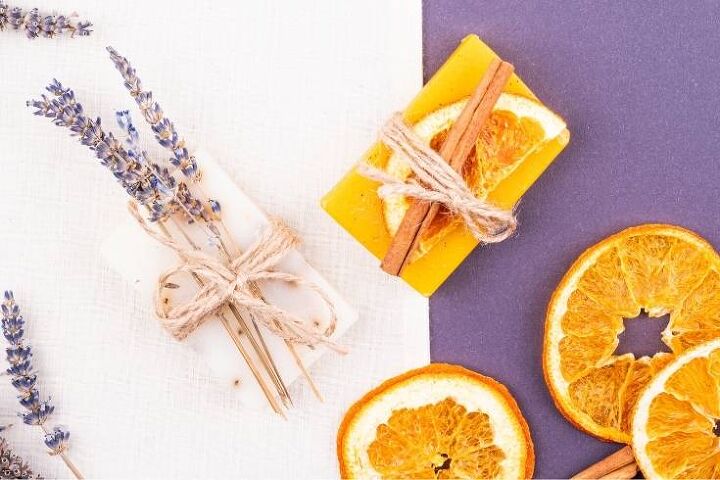
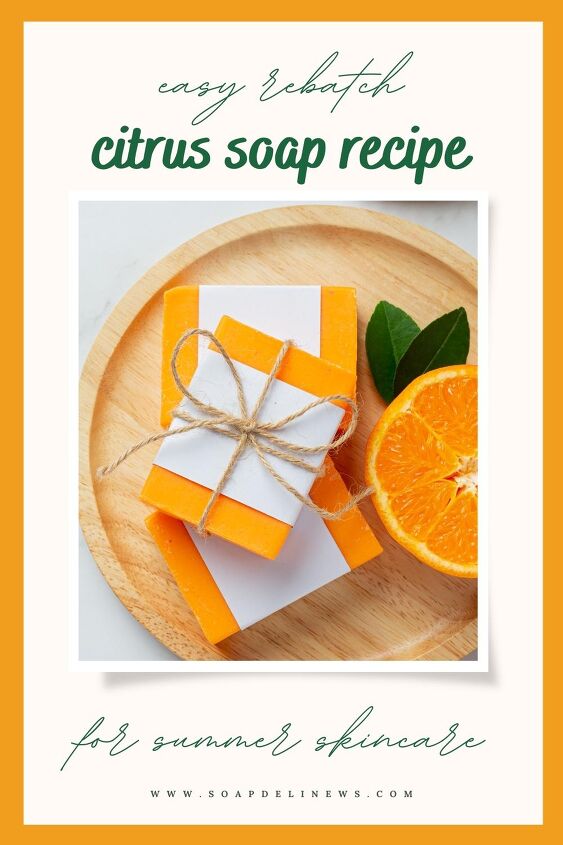




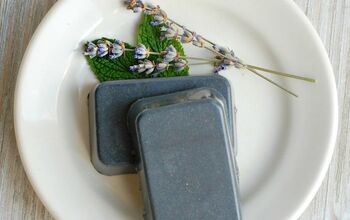

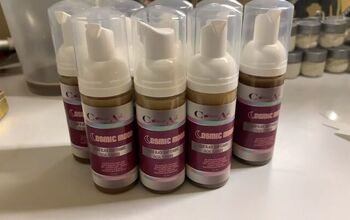
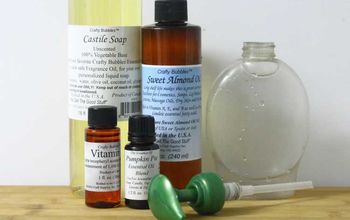

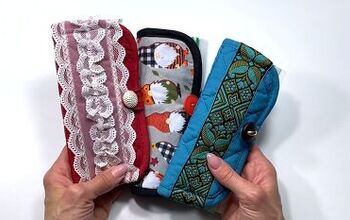



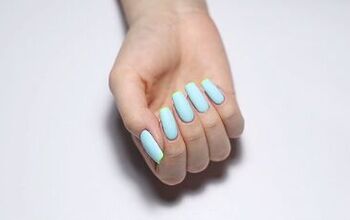
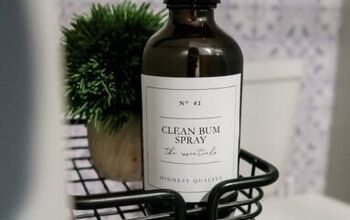





Comments
Join the conversation